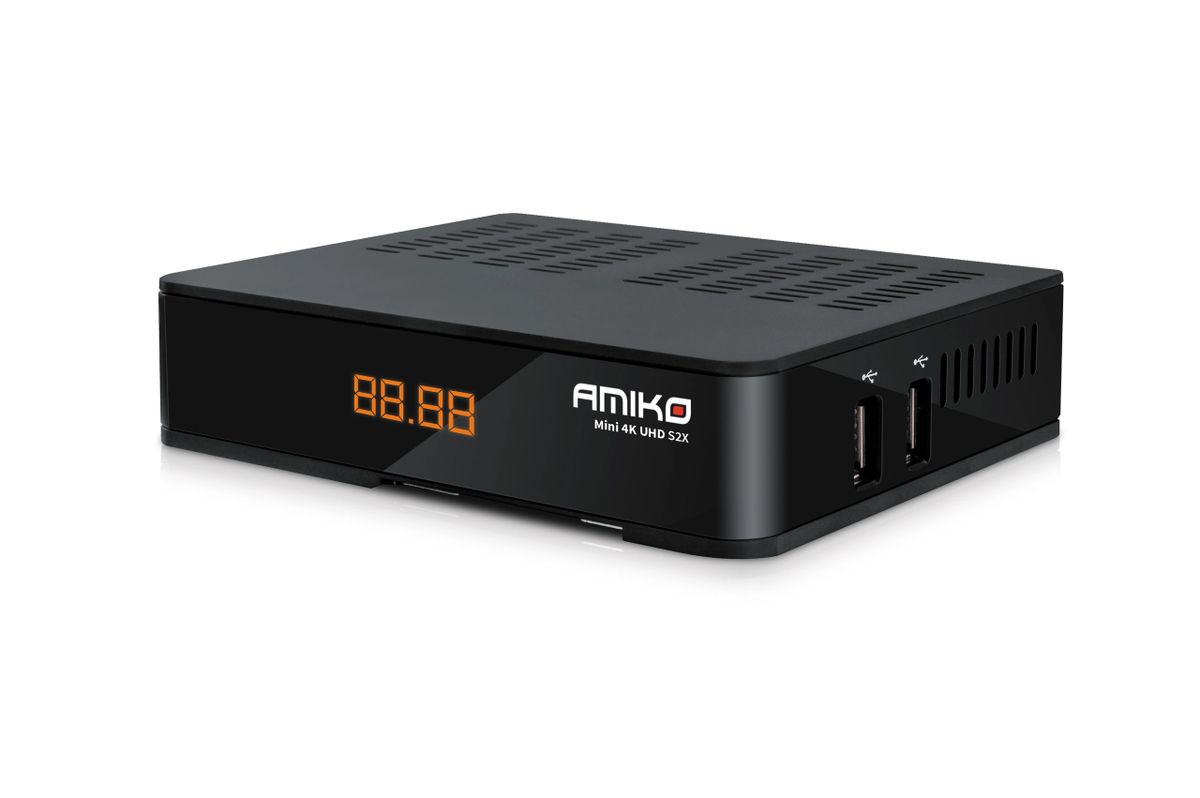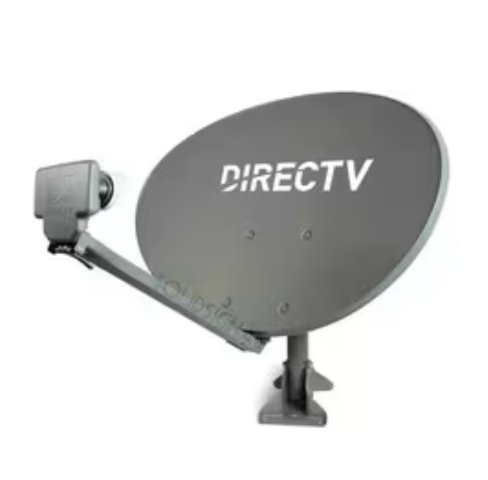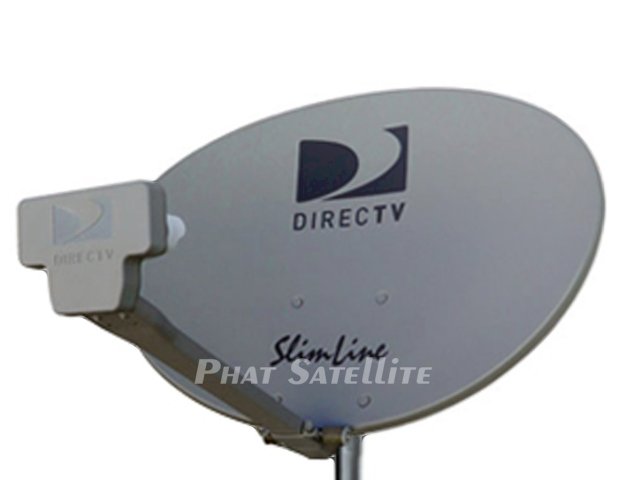I want to get some FTA channels out at my camp because I stopped using Directv a little while back. I currently just have like 10 OTA antenna channels but I see there are lots of FTA satellite channels out there. I have a very old sat dish from like 2007 or something and a newer oval one from around 2018. I also have a old DIRECTV R15 Receiver and a Directv Gemini receiver that I'd prefer not to use because I lost the remote. I'd honestly be happy with even 1 new channel off Galaxy 19 or a different one. According to my research I should be able to use the new satellite dish with the R15 and still get some of the MPEG-2 channels. Should I spend my time setting this up or no?
Wondering what channels I can get with some old equipment.
- Thread starter nointernetguy
- Start date
- Latest activity Latest activity:
- Replies 17
- Views 2K
You are using an out of date browser. It may not display this or other websites correctly.
You should upgrade or use an alternative browser.
You should upgrade or use an alternative browser.
You can't use the Directv receivers for anything on FTA. You'll need a new receiver.
As far as a new FTA receiver goes if you are looking for a small investment just to see if things work out for you there are inexpensive (from Asia) receivers to get you started. Perhaps this one?
GTMedia V7 S5X
There are other receivers out there with better support though if you have a few more bucks to throw at them.

 hypermegasat.com
hypermegasat.com
GTMedia V7 S5X
There are other receivers out there with better support though if you have a few more bucks to throw at them.

Amiko MINI 4K UHD DVB-S2 S2X H.265 HEVC FTA Receiver
Amiko MINI 4K UHD DVB-S2 S2X H.265 HEVC FTA Receiver We load the latest Factory Firmware and our custom Satellite/Transponder List for North America prior to shipment. FEATURES 2 High Speed USB 2.0 Connection Support External infra port Blind Scan, Manual Scan, PID Scan NTP clock keeps time 100%...
You may need a new LNB to mount at the focal point of your dish. Can you post photos of the dishes you have?...I have a very old sat dish from like 2007 or something and a newer oval one from around 2018....
So you're not disappointed, these are some of the channels that may be available to you: FTA Ku channels
You may need a new LNB to mount at the focal point of your dish. Can you post photos of the dishes you have?
Re: I know I'll need new lnbs for all of them, I'm wondering how many channels I'll get now. I also have a few old small circular dishes but they're pretty rusty and I think they're to small for anything.
Attachments
If your dish antenna looks like the ones in the photos above (DirecTV Slimline or the 5LNB cluster), I have had good luck with those. I currently have one of each pointed at 87W and 129W. Replaced the stock LNBF assembly with a linear by drilling a hole in the appropriate spot and adding one of Hyper Casey 's LNB holders with a linear LNBF. I did have another of them for a couple of days in the front yard* on a temp mount pointed at 67W, with a DishPro tacked to the side for 77W.
If you can find locally an old SuperDish, or even better HughesNet, those work great too. I have one of the Hughes dishes pointed at 97W, with additional LNBs for 101W and 105W.
For multiple dishes, you'll want to look into DiSEqC 4x1 or 8x1 switches, and there are more complicated ways if you want multiple dishes and multiple receivers. But sounds like you'll be happy with one dish into one receiver at least until the bug bites you.
* until Mrs Pepper said no dish antennas in the front yard!
If you can find locally an old SuperDish, or even better HughesNet, those work great too. I have one of the Hughes dishes pointed at 97W, with additional LNBs for 101W and 105W.
For multiple dishes, you'll want to look into DiSEqC 4x1 or 8x1 switches, and there are more complicated ways if you want multiple dishes and multiple receivers. But sounds like you'll be happy with one dish into one receiver at least until the bug bites you.
* until Mrs Pepper said no dish antennas in the front yard!
Last edited:
Those dishes should be ok for most Ku signals as long as you don't mind losing them during heavy rain/snow. They might be a tad too small for weaker signals like Montana PBS on 99W or LPB on 87W, depending on your location. But once you get a new LNBF mounted, they are definitely worth a try. They would probably work fine for the NHK multiplex on 101W, maybe for the PBS multiplex on 99W, and 97W
Have fun!
Have fun!
Do you think I could get byu on 116.8 w?Those dishes should be ok for most Ku signals as long as you don't mind losing them during heavy rain/snow. They might be a tad too small for weaker signals like Montana PBS on 99W or LPB on 87W, depending on your location. But once you get a new LNBF mounted, they are definitely worth a try. They would probably work fine for the NHK multiplex on 101W, maybe for the PBS multiplex on 99W, and 97W
Have fun!
I would cruise Craigslist for dishes. They pop up frequently. 90cm, 1m, 1.2m.
Just checked my notes. I was able to get BYU and BVN with a dish that size. With a slightly larger (SuperDish 105) I am getting basically everything there.Do you think I could get byu on 116.8 w?
I just remembered about my old very small circle DirecTV dishes. Do you think those would get me BYU and BVN because it's only two channels or are they just junk.Just checked my notes. I was able to get BYU and BVN with a dish that size. With a slightly larger (SuperDish 105) I am getting basically everything there.
BVN has a low symbol rate and a high error correction rate, so it doesn't take a huge signal to receive it properly. However, I have no idea what the actual output power on their transponder is, or how to do the math anyway. So unless someone comes up with that, the only way to tell would be to try it.
If Lyngsat is correct, then BVN uses DVB-S2 QPSK FEC 1/2. This means you need 1.0 dB to lock it. Very low and should be easy to lock with minimal signal. It broadcasts exclusively in the Dutch language.BVN has a low symbol rate and a high error correction rate, so it doesn't take a huge signal to receive it properly....
On the other hand, BYU uses DVB-S2 8PSK FEC 2/3. This means you need 6.6 dB to lock. So it's going to be tougher. BYU has some interesting shows in English.
All of the lnbfs that I find when I search "ku band fta lnb(f)" are all saying .1 db. Where can I find a higher one?If Lyngsat is correct, then BVN uses DVB-S2 QPSK FEC 1/2. This means you need 1.0 dB to lock it. Very low and should be easy to lock with minimal signal. It broadcasts exclusively in the Dutch language.
On the other hand, BYU uses DVB-S2 8PSK FEC 2/3. This means you need 6.6 dB to lock. So it's going to be tougher. BYU has some interesting shows in English.
All of the lnbfs that I find when I search "ku band fta lnb(f)" are all saying .1 db. Where can I find a higher one?
0.1 dB will be reached at about -260 degree Celsius or so, I guess. Or maybe even at -200 or -150.
Not at 'room temperature'.
So it is just a marketing number. It will probably be 0.6 or so at room temperature?
Greetz,
A33
That's just a "noise" figure for the lnb.The db levels others are talking about are for actual signal levels you need to receive a channel."ku band fta lnb(f)" are all saying .1 db.
All of the lnbfs that I find when I search "ku band fta lnb(f)" are all saying .1 db. Where can I find a higher one?
A good selection here:

Re-asking this question here. I know I'll need knew lnbs for them but would they work?I just remembered about my old very small circle DirecTV dishes. Do you think those would get me BYU and BVN because it's only two channels or are they just junk.
Similar threads
- Replies
- 3
- Views
- 179
- Replies
- 8
- Views
- 430
- Replies
- 5
- Views
- 560
- Replies
- 53
- Views
- 3K
- Replies
- 2
- Views
- 360
Users Who Are Viewing This Thread (Total: 0, Members: 0, Guests: 0)
Who Read This Thread (Total Members: 86) Show all
- nointernetguy
- mikekohl
- k4otl
- SDA_FL_USA
- Mister B
- cyberham
- mr_rye89
- Brct203
- markandegla
- gms49ers
- Gulcher
- pamajestic
- Pepper
- oldsmobile
- jorgek
- one_db_compression
- so2344
- clucas
- N5XZS
- Jim S.
- c-spand
- Tecnicoloco
- 1oldman123
- Elsguy
- a33
- voomvoom
- mc6809e
- Mr_Dc2tracker
- waylew
- juventusbrown
- TvSteve
- catamount
- phlatwound
- primestar31
- W6MMS
- FTA4PA
- Keith Brannen
- Mr Tony
- comfortably_numb
- Mike045
- kofi123
- Hyper Casey
- stecle
- Tom Speer
- jayn_j
- harshness
- John2021
- osu1991
- telstar_1
- Art7220
- PrunePicker
- froggigger
- bcwmachine
- pacificrim
- Borisov-54
- iBoston
- LRE
- orac
- Titanium
- Comptech
- beaz58




